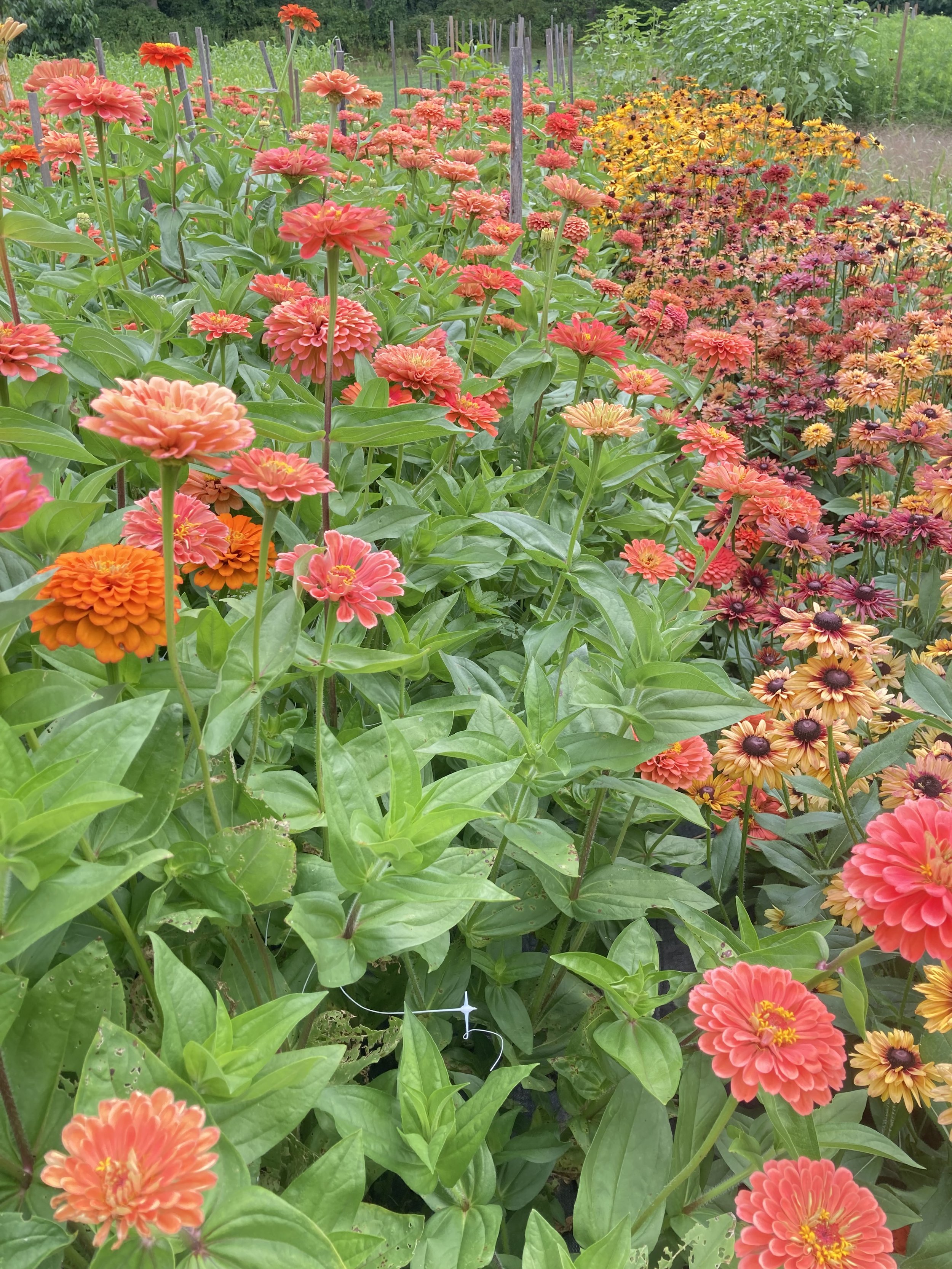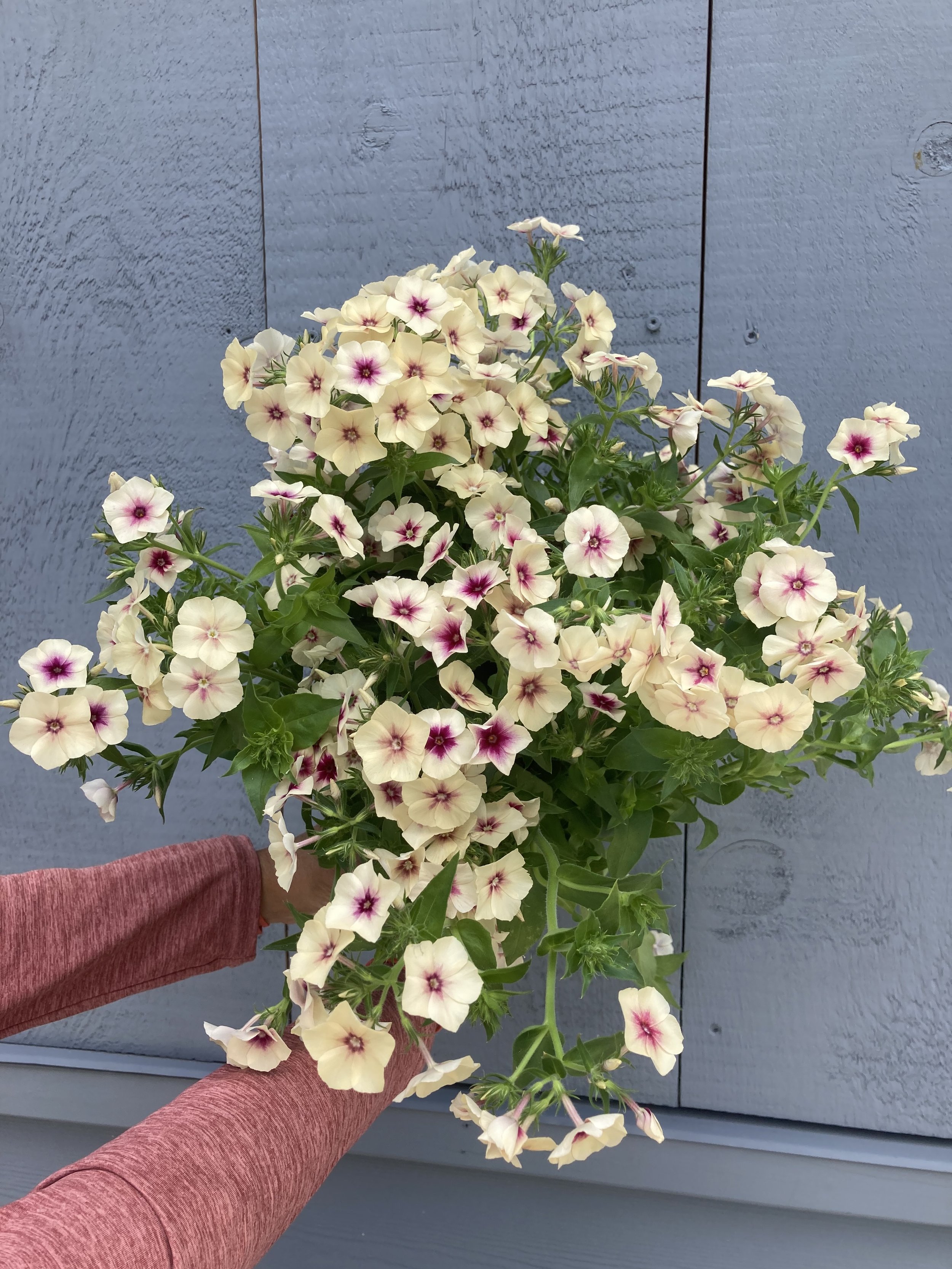Flowers, fungus, and fun
Greetings, farm friends!
Lovely lisianthus
We’ve enjoyed a beautiful and productive first week of August on the farm. We planted our final successions of marigolds, celosia, stock, and ornamental kale, and we’ll transplant and direct seed the season’s final sunflowers next week. After last week’s heat wave, the cool weather was a delight, making our morning harvests and afternoon fieldwork far more pleasant. It’s amazing how much more productive you can feel when you’re not trudging through heat and humidity! In a rare turn of events, we’ve nearly checked off every item on this week’s to do list! Next week it looks like we’ll be able to catch up on neglected tasks like weeding and feeding perennial plantings. We’re also still seeding lots of cover crop, trying to get buckwheat and clover in before it’s too late.
The last two weeks have brought on the first big harvest of dahlias and lisianthus! The dahlias will be with us until frost, our faithful autumn friends. Lisianthus is another story— while we always ope to get two flushes of blooms off our lisianthus plants, we really struggle to achieve this! A fungus called fusarium lives in the soil on our farm, and it is one of the primary plant pathogens we and many other farmers struggle with. You may be familiar with fusarium as the plant pathogen that resulted in the extinction of the Gros Michel banana, and which threatens the future of the now prominent Cavendish banana. There are many different species of fusarium that live in soil, and not all of them are pathogenic, but some are, and they tend to be incredible challenging to eradicate. For this season’s lisianthus planting, we attempted a biofumigation method researched by the University of Tennessee, but it seems as though we were unsuccessful.
Last season, we lost nearly all of our lisianthus crop to fusarium wilt. Lisianthus is a huge investment for us; we order thousands of dollars in seedlings in November for delivery in April the following year. The seedlings are then planted as soon as we’re able to get them in the ground, and stay in the ground until they begin to bloom in mid-July. Their long time to maturity paired with the high price of plugs makes them an incredibly high rent crop. That said, the blooms are stunning and their rose-like form is extremely desirable. The vase life is extraordinary, especially compared to most other summer blooms. Soon, we’ll be faced with the decision of whether or not to grow lisianthus next year. Can they be a profitable crop for a farm that really struggles with fusarium? We may try again using different methods, or we may determine that it’s just not worth it for us!
Our strawflower is going strong this summer! After making more money on one bed of strawflower than five beds of lisianthus last year, we decided to plant a whole lot more of it. It may have been too much, but it’s such a fun flower! We’ll have oodles of dried bunches for market and florists this fall.
We’ve got a great roster of upcoming events on the farm. Details and tickets here. Come play with us!
Zinnias and rudbeckia.
We’re back at the JFX Market this Sunday, August 6th.
For this week’s market we’ll have bouquets, dahlias, sunflowers, snapdragons, strawflower, rudbeckia, cosmos, lisianthus, basil and so much more!
Thanks for reading this far! Next week I’ll be on vacation, so our crew member Jane will be sending out the newsletter.
Wishing you all the best,
Amelia & the Two Boots crew
Spooky has been recovering from an illness but he’s on the mend and roaming the farm again.
Phlox- by far our most requested flower from florists, and also terribly stubborn to germinate and very popular with rabbits. But this week we had a great harvest!






